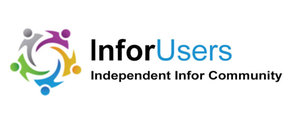Pharmacy Prescriptions Influenced by Drug Company Payments to Physicians
Medication prices for consumers continue to increase with little justification from the manufacturers. Medication costs can result in patients becoming noncompliant with their therapies. This in turn creates healthcare issues, such as driving more emergency department visits, or worse, higher mortality. Medication costs are associated with financial incentives for the physicians to prescribe medications from manufacturers who provide an additional source of revenue for the physicians. This is an egregious practice that needs to be eliminated.
A recent study published in the Annals of Internal Medicine exposes the impacts of drug company payments to physicians for prescribing medications. These payments disrupted the physicians in making independent therapeutic decisions for their patients, and in some cases, the medications prescribed were less effective or equally effective compared to other medications but cost more. Approximately two-thirds of physicians received drug company payments from 2015–2017, and a higher percentage of oncologists and orthopedists received payments.
To help police this issue, the American Medical Association updated its ethics code to “decline cash gifts in any amount from an entity that has a direct interest in the physicians’ treatment recommendations.” The Pharmaceutical Manufacturers Association has moved to restrict practices such as hosting meetings at restaurants between physicians and pharmaceutical sales representatives. The Affordable Care Act created the Open Payments program that requires providers to report any financial transactions greater than $10 from manufacturers.
Real-Time Prescription Benefit Solutions
Real-Time Prescription Benefit (RTPB) solutions are designed to bring pricing transparency for medications into the EHR environments to ensure providers have recent, accurate medication information at the point of care. Providing this capability allows physicians to improve patient-focused healthcare by having meaningful medication discussions with patients to include cost information. A recent RxRevu survey found that 88% of surveyed physicians want pricing information at the point of care to discuss affordable medication options and alternatives with their patients. Yet 51% of survey respondents state that they do not have access to accurate, patient-specific medication pricing in the EHR. While some physicians have access to medication information in the EHR, 78% feel the information is not accurate or is outdated.
The ability to integrate RTPB solutions into the EHR will enable physicians to know medication costs and insurance coverage during patient encounters. Electronic prior authorization (ePA) transactions can also be accommodated to ensure the medication is covered by the insurance plan. This will allow the physician to have the necessary discussions with the patient regarding drug cost that may influence medication compliance, and that will likely reduce costs associated with readmissions and emergency department visits. The ability to extend this service to include deliveries of the medications directly to the patient from the hospital pharmacies or retail pharmacies provides an additional level of patient-focused care that can also improve medication compliance.
Improve Patient-Focused Care While Reducing Medication Costs
Integrating RTPB solutions into EHR systems will provide up-to-date medication information that will help patients comply with their medication therapies. These solutions will drive physicians to leave the comfort zones of their prescribing regiments to consider better and less costly medication alternatives. These solutions will also prevent surprises for patients if the ordered medications are not covered by their insurance or are covered in the expensive pricing tiers. If the medications are not covered by insurance, pharmacies must conduct callback communications with the physicians to correct or change the medication order. These processes are time consuming for expensive clinical professionals.
Can Emerging Solutions Compete with Surescripts?
RTPB solutions are emerging that will likely drive down costs and improve patient medication compliance, but the vendors of those solutions will be challenged to take market share from Surescripts. The following are representative vendors:
- RxRevu – is used by over 4000 hospitals, health systems, and clinic partners.
- Surescripts – is the biggest, most established player in the market.
- CenterX – has a solution in the Epic App Orchard.
- CoverMyMeds – is a McKesson subsidiary.
Success Factors
- Use the P&T committee leaders and high-prescribing physicians to develop RTPB requirements and evaluate the top solution considerations.
- Call current RTPB vendor clients to evaluate the difficulty and effectiveness of the EHR integration.
- Evaluate the financial and operational risk associated with contracting with an emerging vendor to ensure it meets with the organization’s risk tolerance.
Summary
RTPB systems provide a solution for improving medication prescribing at the point of care. The solutions are effective when integrated with the physicians’ EHR solutions and should include ePA functions to further enhance the medication prescribing process. Patient-focused care is driving providers to reexamine care delivery processes to drive higher levels of patient satisfaction and care compliance. The ability to discuss medication pricing options with patients will likely improve medication compliance, and the ability to conduct ePA transactions will reduce frustrations for pharmacies, physicians, and patients when medications fail the authorization process. The ability to marry RTPB solutions with medication packaging and delivery services adds another dimension for achieving patient compliance and driving higher satisfaction ratings.
The time saved by physicians and pharmacists with integrated RTPB solutions will reduce the overall process cost for the medication prescribing process. These solutions will also improve care quality and outcomes. Adopting these solutions will be important as providers are taking on more at-risk, value-based contracts.
“The biggest room in the world is the room for improvement.” —Helmut Schmidt
Photo Credit: Adobe Stock, I Viewfinder


